I’ve tested the Fujifilm 45-100 mm f/4 against two other Fuji GFX zooms, the 32-64/4 and the 100-200/5.6. In this and the two posts after it, I’ll be comparing the lens to the Fuji 45/2.8, 63/2.8, and 110/2. I’m doing the 110/2 in this post, and testing it against the 45-100 at f/4, f/5.6 and f/8. I’ll be looking at center and corner sharpness using a 22-inch-diameter low-contrast Siemens star target that I printed for this test.
The scene, at f/4 with the 45-100:
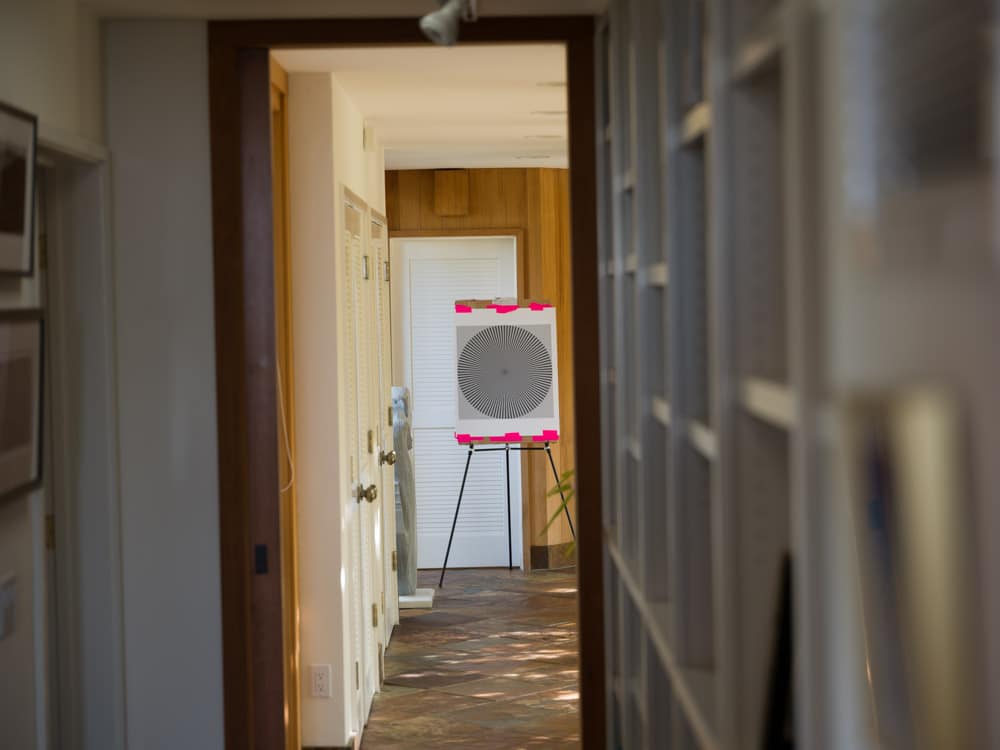
Target distance was 14 meters.
Test conditions:
- The heaviest RRS legs
- Arca Swiss C1 head
- ISO 100
- Electronic shutter 1/10 at f/4, 1/5 at f/5.6, and 1/2.5 at f/8
- 2-second self-timer
- AF-S, medium spot size
- 3 sets of shots at each test condition
- Developed in Lightroom
- Picked best shot of each test condition
- Sharpening amount 20 radius 1, detail 0 (much less sharpening than the default)
- Adobe Color profile
- White balanced to grey background
We’ll look at some tight crops at about 130% magnification.
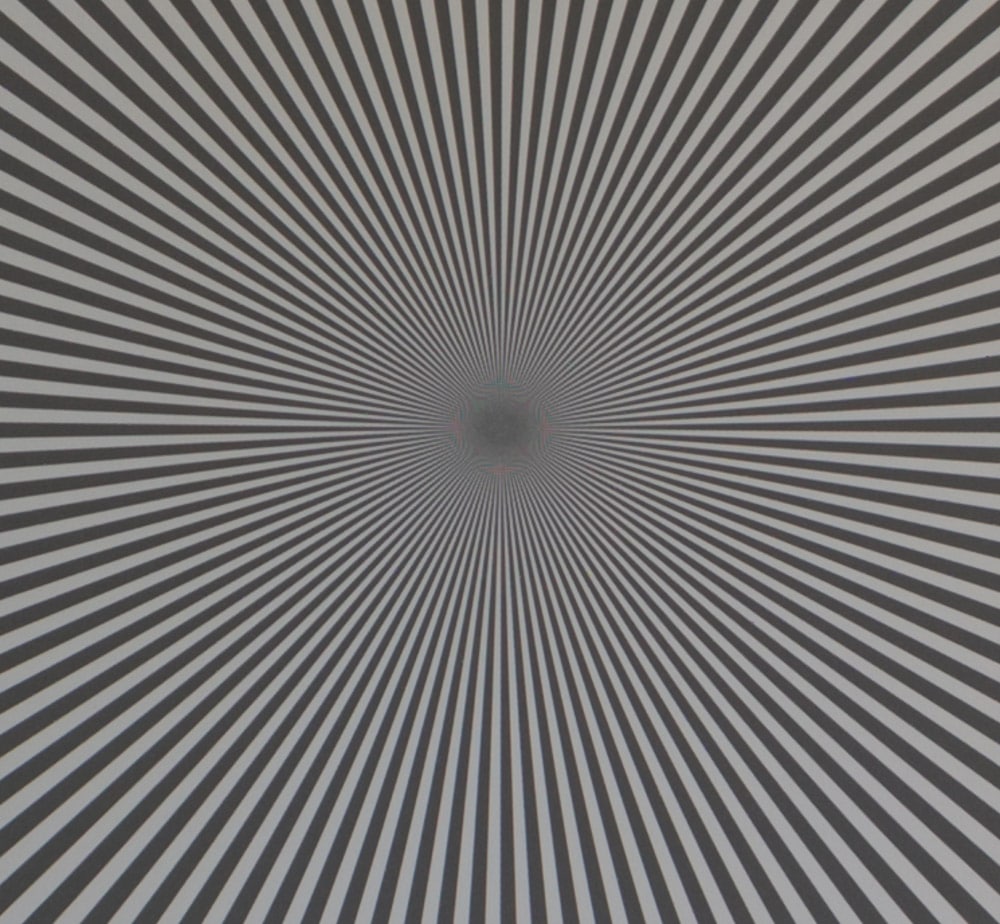
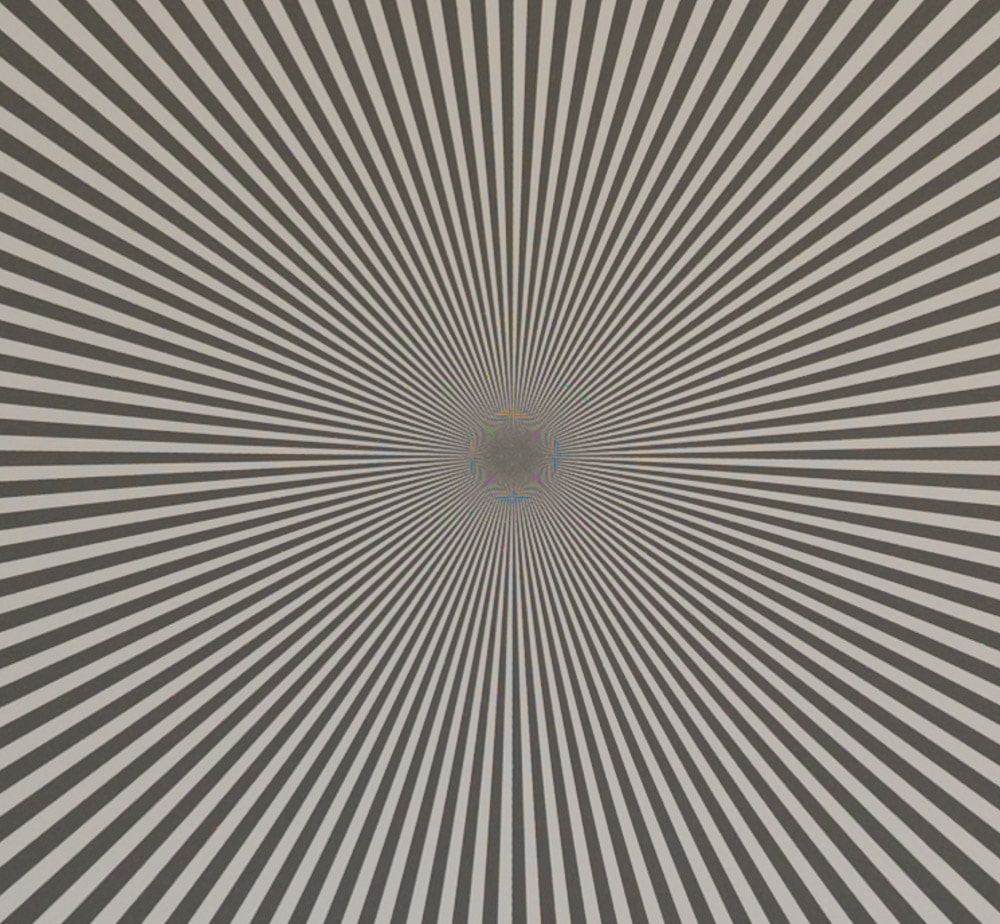
The 110 is substantially sharper.
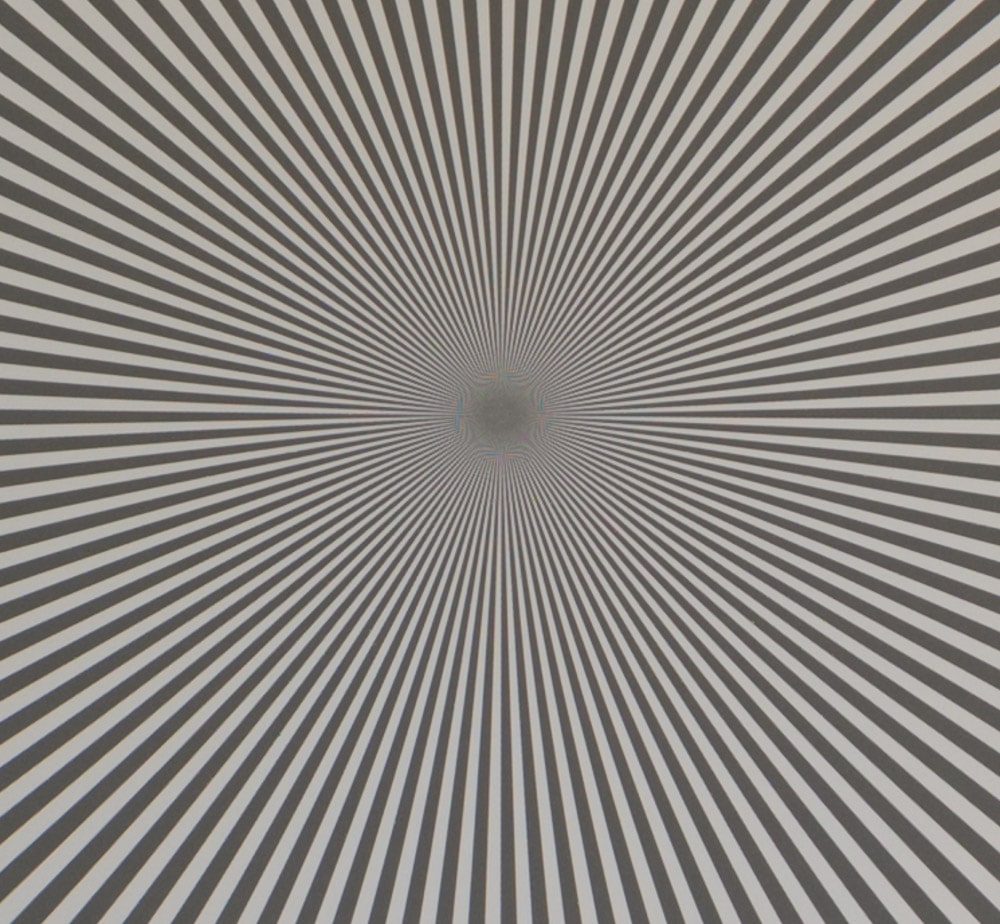
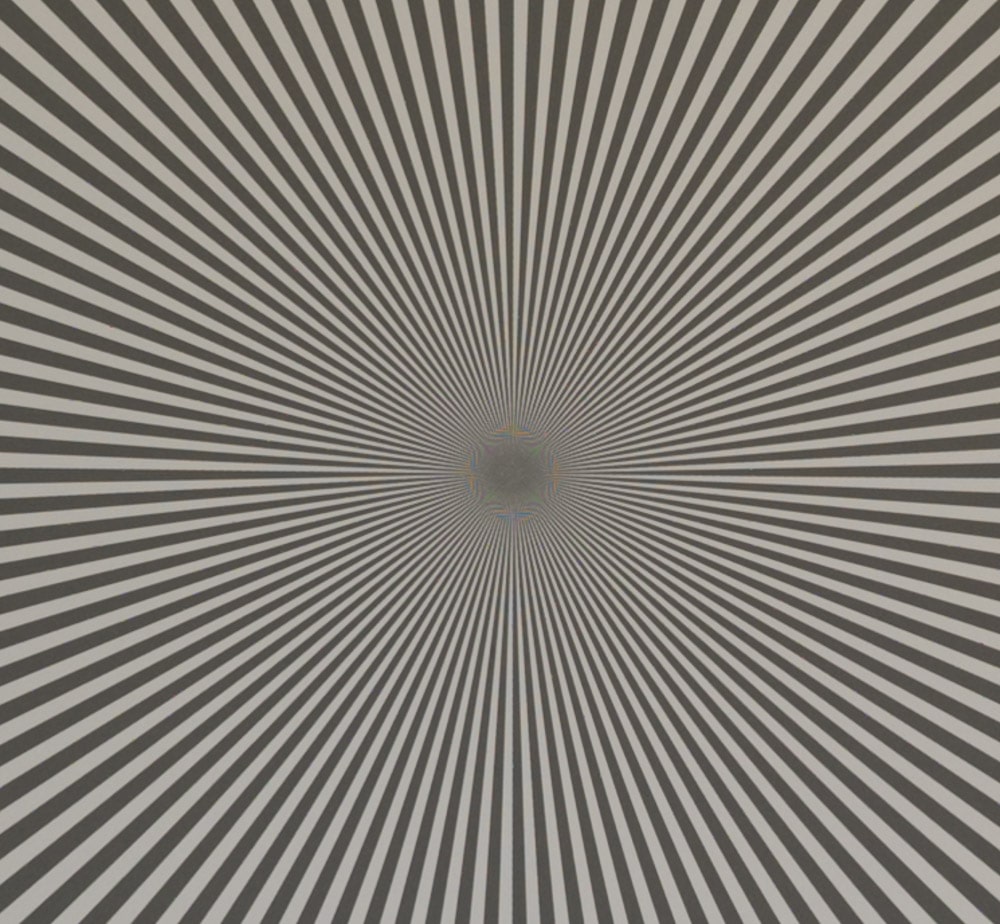
Now the zoom is almost as sharp as the prime.
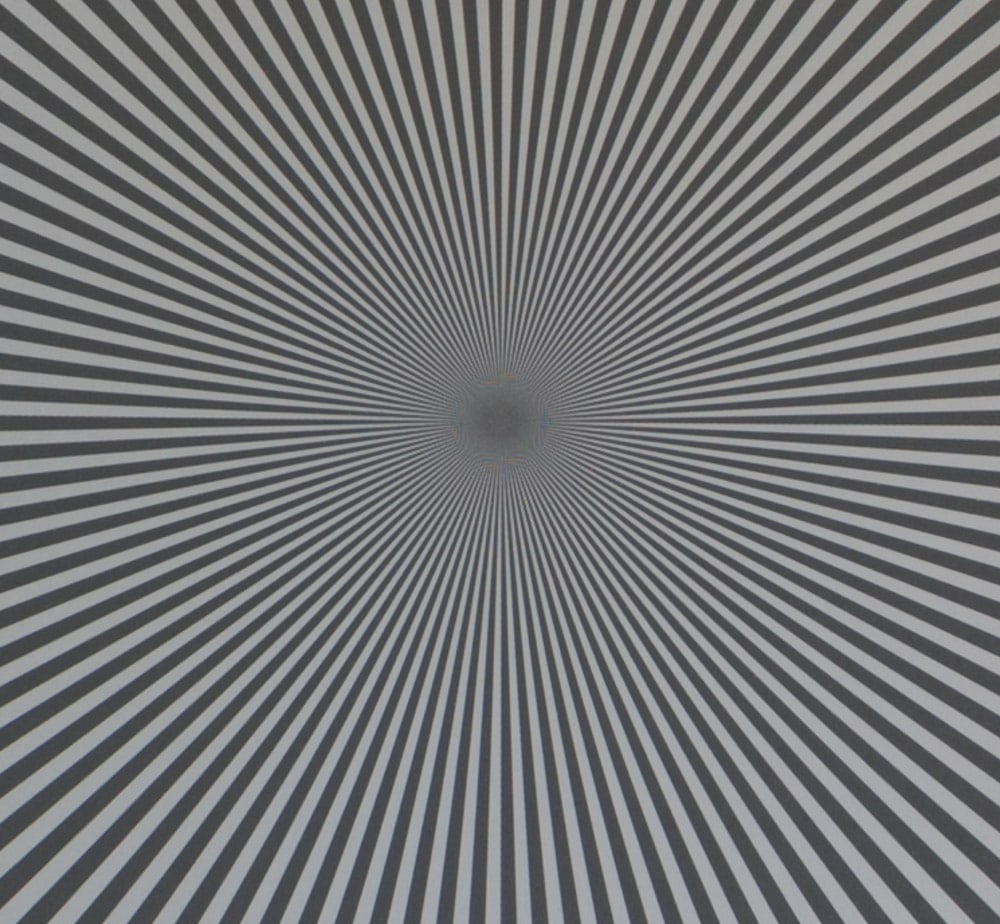
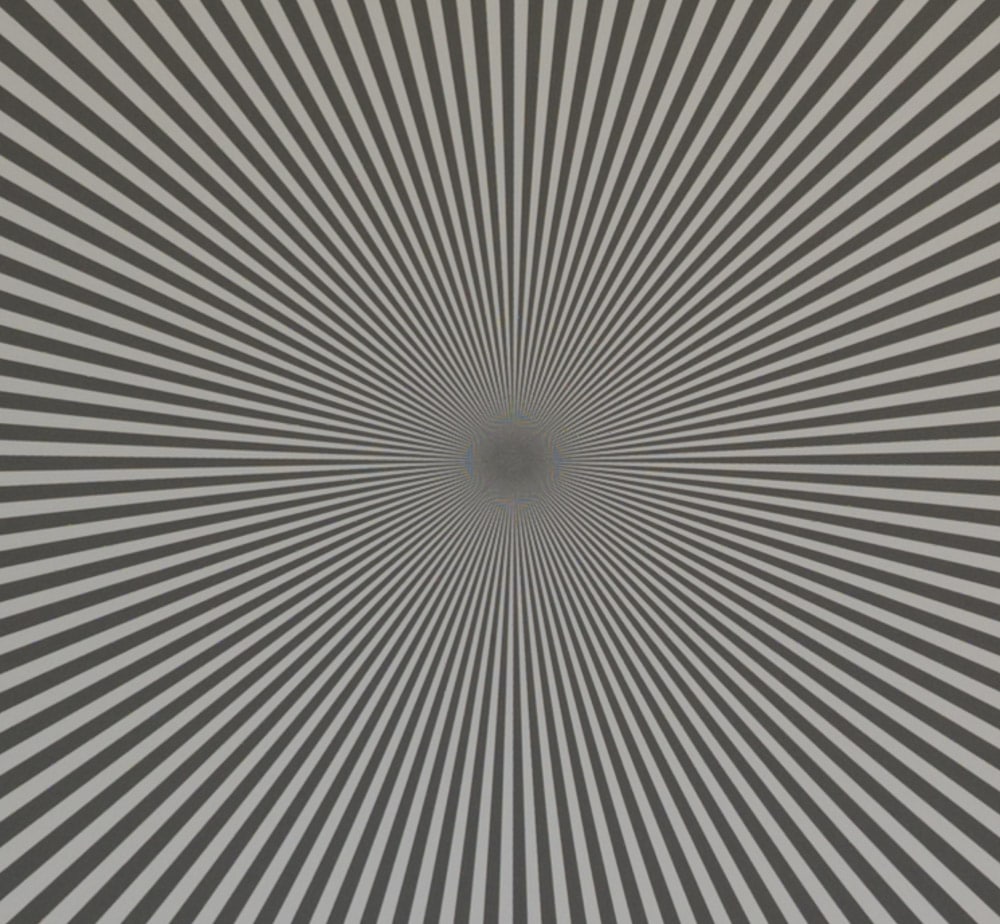
Again, there’s not much sharpness difference.
In the upper right corner:
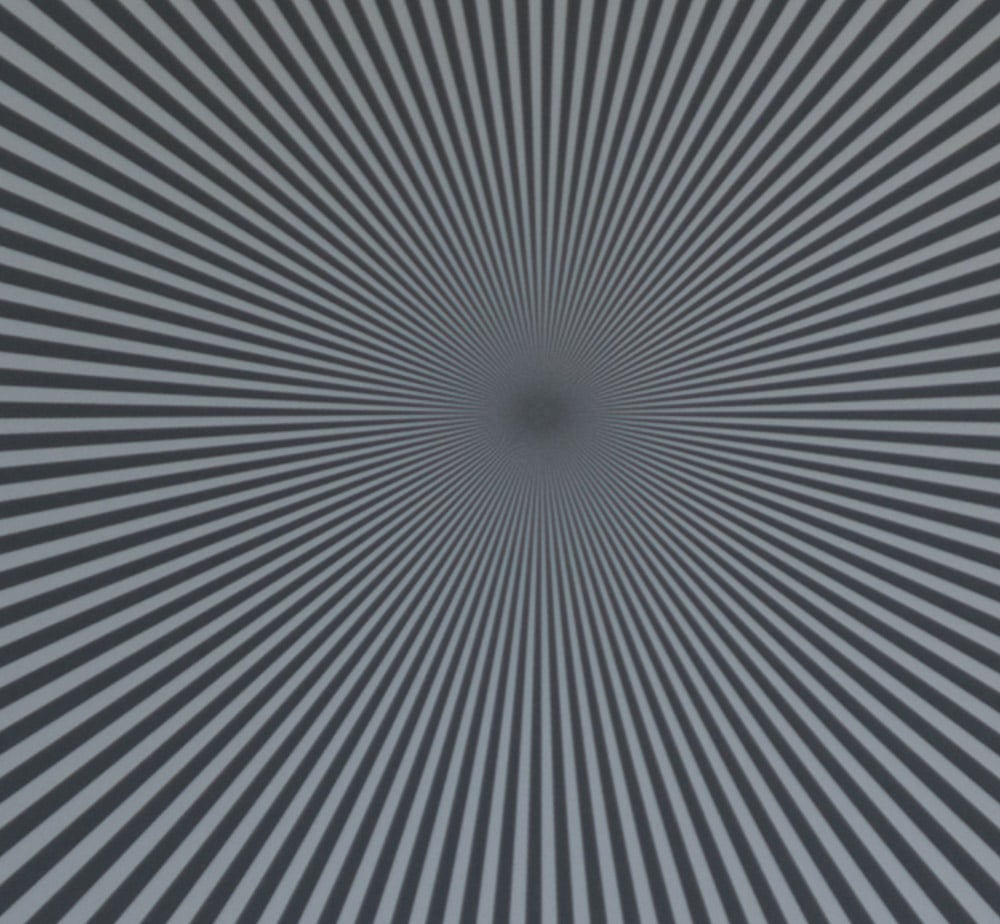
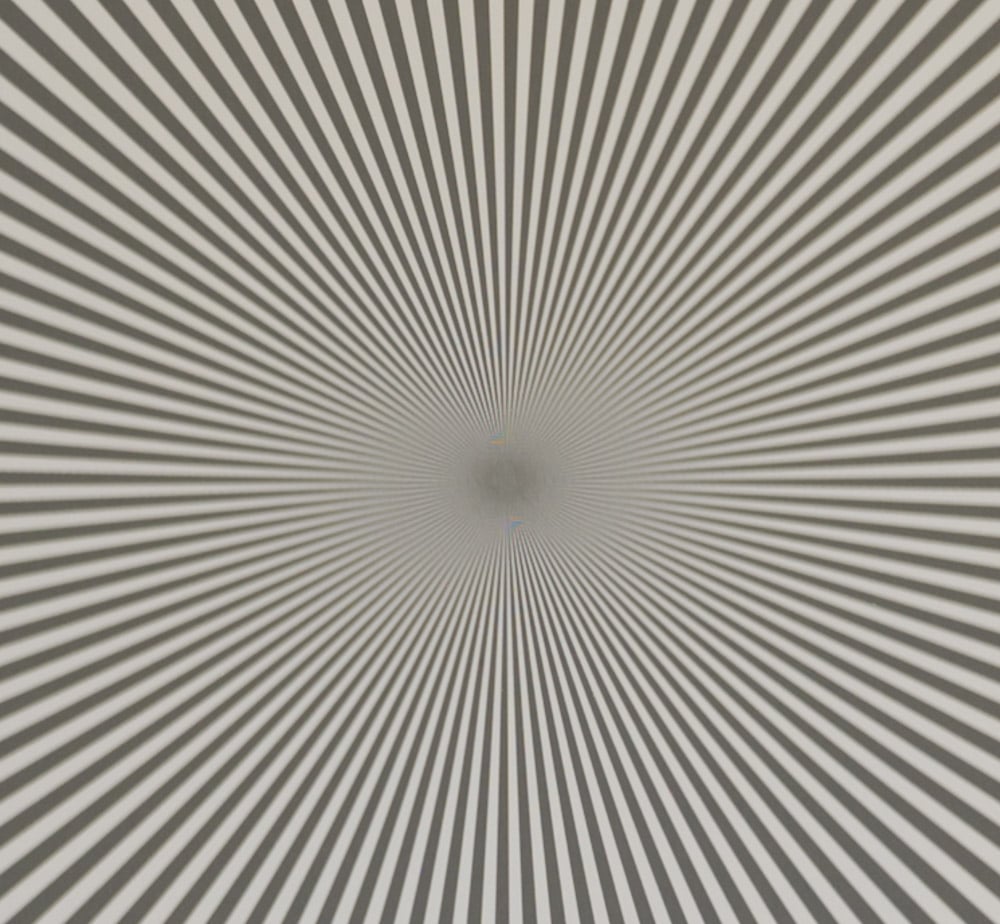
About the same.
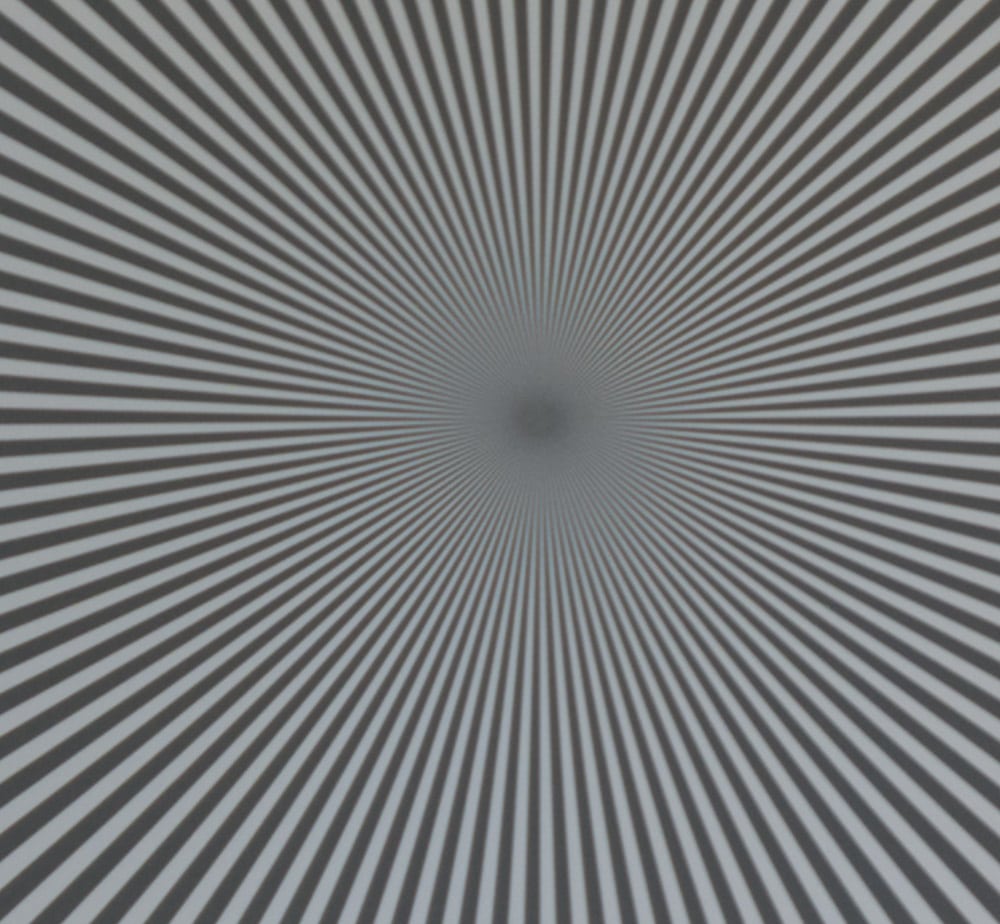
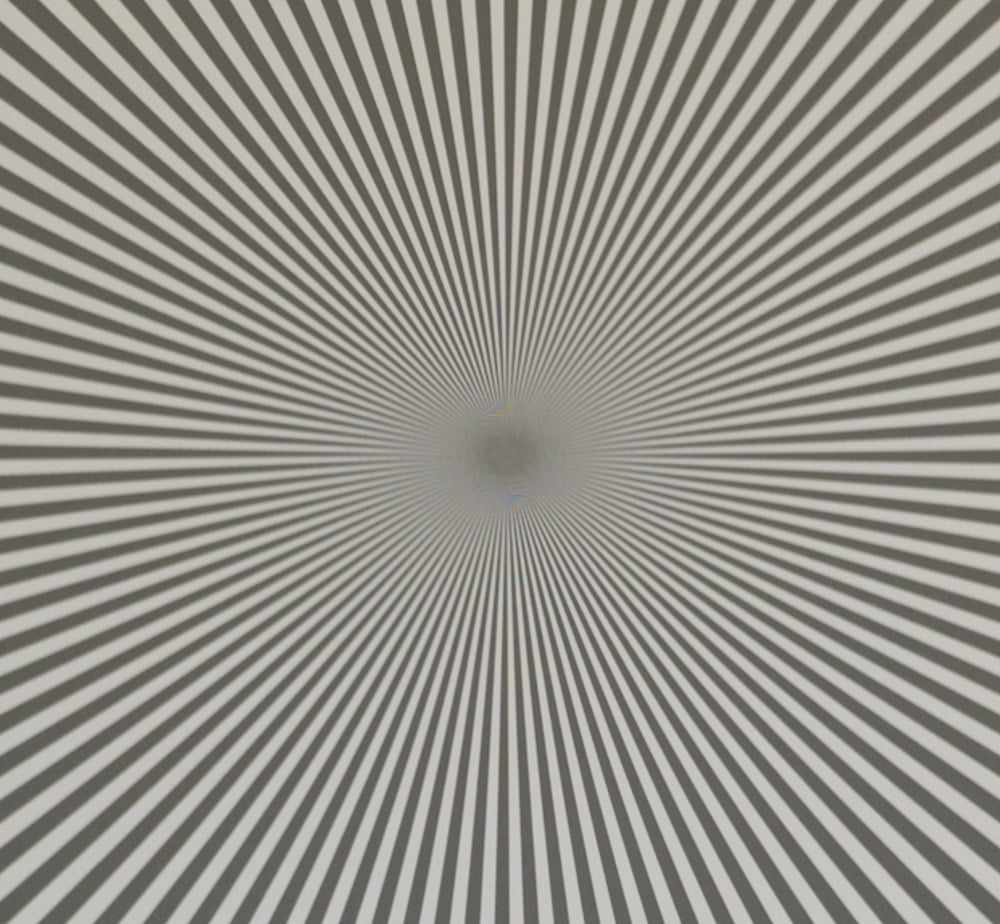
The 110 is somewhat better.
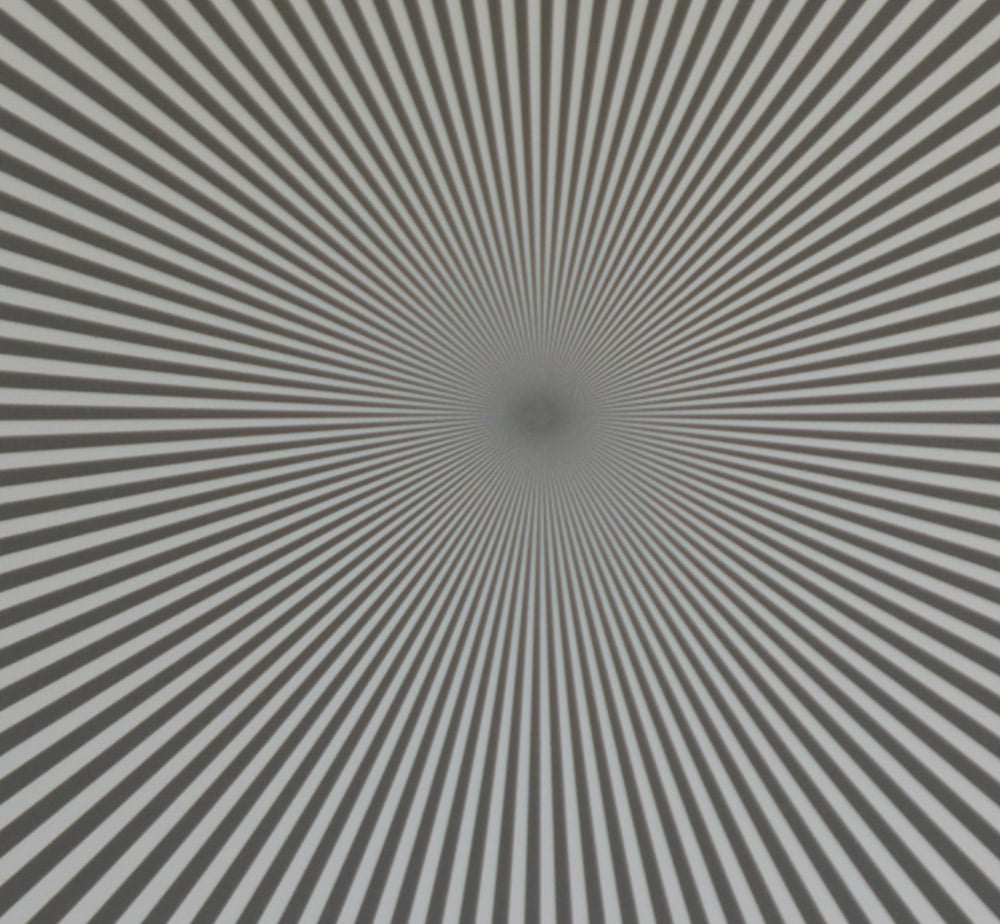
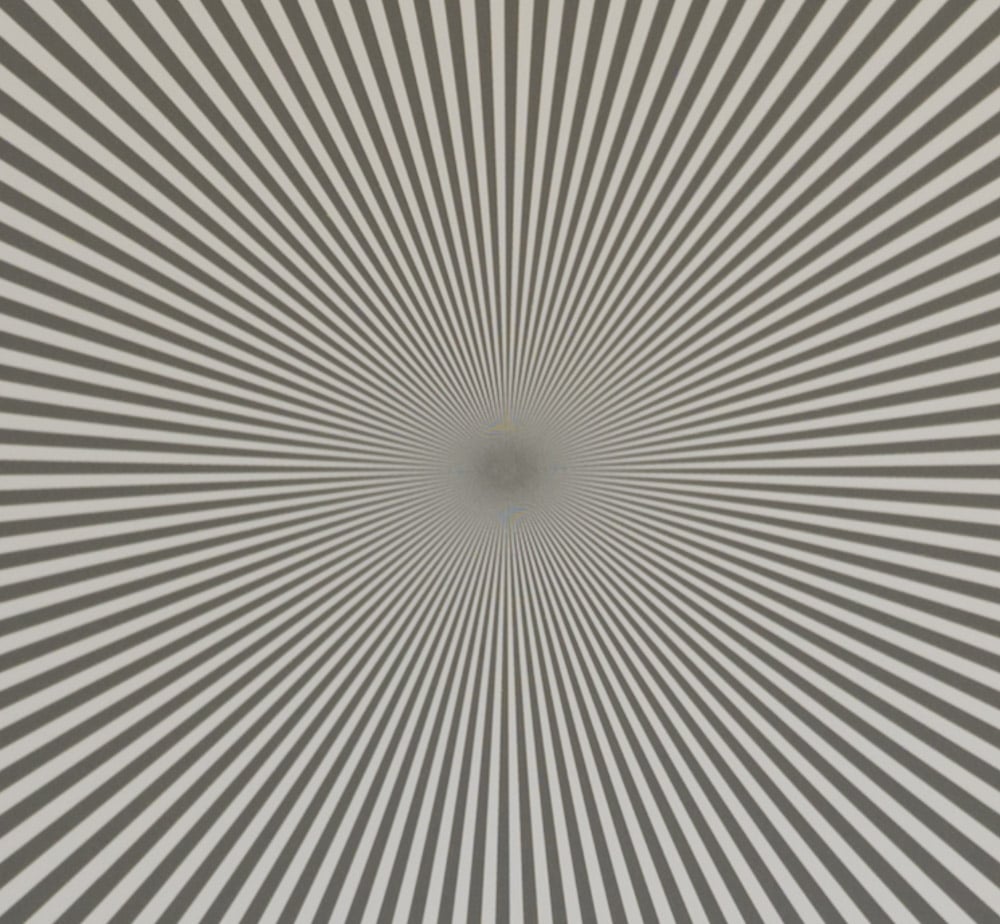
Not much difference.
Jerrad Johnson says
Regarding the center images:
It seems that the prime’s capture is less sharp at f/5.6 than it is at f/4.
And that the zoom’s performance is opposite: more sharp at f/5.6 than it is at f/4.
Thus, they so to speak ‘met in the middle.’
Is this correct?
JimK says
Yes. Diffraction is the great leveler.